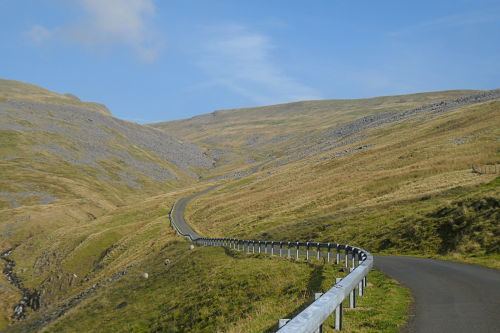Listing Hewitt, Nuttall OS grid NY710321 Elevation 848 m | Topo map OS Landranger 91 Prominence 76 m | |
 | ||
Similar Cross Fell, Pennines, Dufton Pike, Mickle Fell, Burnhope Seat | ||
Descending great dun fell
At a height of 848 metres (2,782 feet), Great Dun Fell is the second-highest mountain in England's Pennines, lying two miles south along the watershed from Cross Fell, its higher neighbour. Together with its smaller twin, Little Dun Fell, which reaches 842 metres (2762 feet), it forms a stepping-stone for the Pennine Way on its long climb up from Dufton.
Contents
- Descending great dun fell
- Map of Great Dun Fell Penrith UK
- Cross fell and great dun fell
- Radar station
- Great Dun Fell Field Station
- Hushing
- Climate
- References
Map of Great Dun Fell, Penrith, UK
Cross fell and great dun fell
Radar station
At the summit there is a radar station that is operated by NATS and is a key part of the Air Traffic Control system for Northern England and Southern Scotland. A radome containing Primary Surveillance radar (PSR) and Secondary Surveillance Radar (SSR) antennae, various towers and fencing crown the summit. Alfred Wainwright abhorred the old radio station (removed in the 1980s) in his book Pennine Way Companion.
The construction of the radar station led to the repaving of a tarred road to the summit, which became Britain's highest road. This road is marked as private from just above the village of Knock, and not open to public motor vehicles. However, it is a bridleway until shortly before the radar station, so it is open to walkers, cyclists and horseriders.
Great Dun Fell Field Station
The University of Manchester formerly had a permanent meteorological observatory at the Great Dunn Fell site. It has hosted a number of field experiments doing research into clouds and their interactions with pollution. As the summit is in cloud for two thirds of the year it is an ideal location for this type of research. The university still has the option to use the site for short-term measurement periods.
Hushing
There are the remains of hushing gulleys on the slopes of the mountain, created during lead mining of the industrial revolution.
Climate
Great Dun Fell is on the border between the tundra and subpolar oceanic climates with a July mean just below 10 °C (50 °F). Winters are extremely mild for a tundra climate, with daytime temperatures most often staying above freezing. The Met Office station publishes only temperature and frost averages. Considering Great Dun Fell’s climate status, the fact that night-time lows average 1.7 °C (35.1 °F) over the course of the year is rather remarkable and a testament to the influence of the waters surrounding the British Isles, which keep summit temperatures relatively low even in summer.
